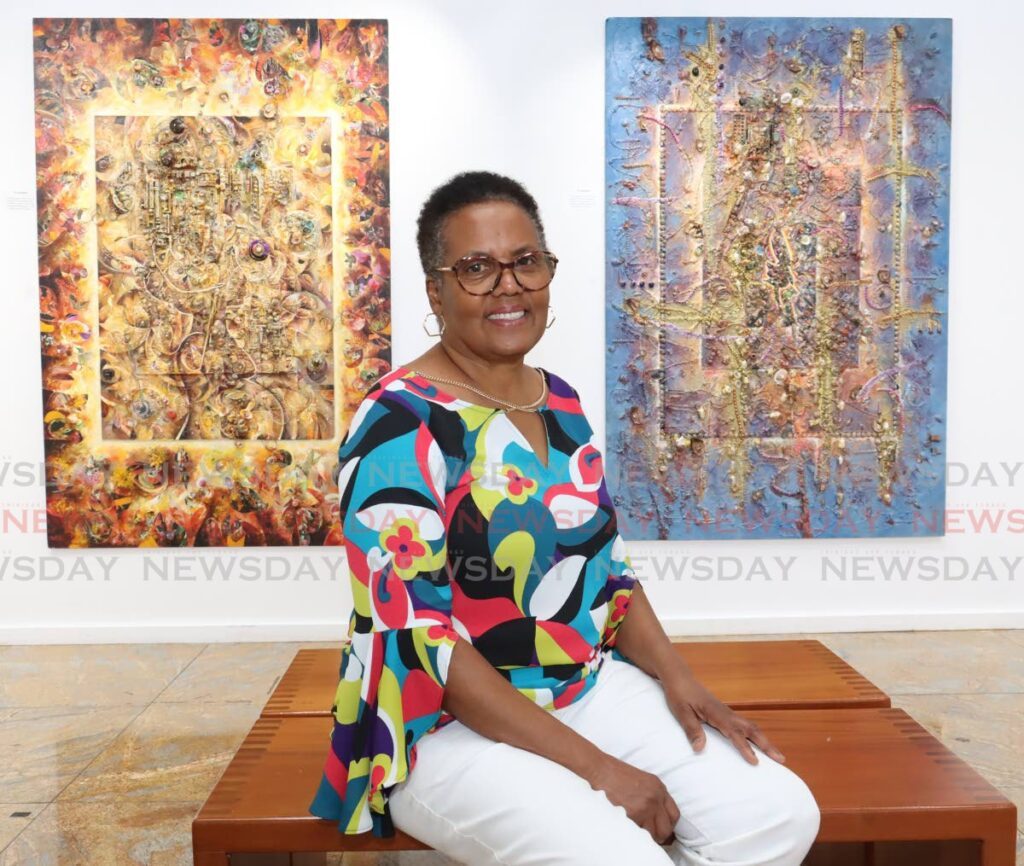Glenn Roopchand’s art journey stops at Central Bank

FAITH AYOUNG
The exhibition Repatriation – A New Beginning, at the Central Bank Museum, is the culmination of the late artist Glenn Roopchand’s vision of bringing his work back home to Trinidad and Tobago to be appreciated and valued.
Born in La Pastora, Santa Cruz, in 1952, Roopchand went to the John S Donaldson Technical Institute (now UTT) to study graphics, got a scholarship to study illustration at Pratt Institute, New York, and later went on to do a degree in fine arts at Montclair University, New Jersey.
He held exhibitions in New Jersey, where he lived with his wife, and had his own studio, where he held artists' tours and allowed other artists to exhibit their work. He taught art at high school part-time as a substitute teacher in Montclair and Newark, New Jersey.
He also held exhibitions at the TT consulate in New York and at galleries in New Jersey.
He was an apprentice of artist Carlisle Chang from 14-20 years before entering "John D." He was also mentored by the poet Anson Gonzalez in philosophy, from primary school to adulthood.
Roopchand was commissioned to reproduce a mural Chang originally did in 1962, at the old Piarco Airport building. Chang's mural, The Inherent Nobility of Man, was destroyed during renovations at the airport.
The reproduction was painted to commemorate the country's 60th anniversary of independence.
"Roopchand, along with other artists, worked to reproduce the work on canvas," the Ministry of Tourism website said.
Curator Andy Jacob, a long-time friend, said of Roopchand: "He loved his country, he was a patriot, and thought his country should have the best of him, but encountered difficulty bringing his art to TT."
After Roopchand's death in 2022, his widow, Angela, made it her responsibility to complete the process he started of bringing his art home.
Now, with the support of the Central Bank’s Museum and Arnim’s Art Gallery, a collection of 26 pieces have been brought from New Jersey.
With Jacob being in Trinidad and Angela in the US, photos had to be taken to ensure the right artwork was selected.
Jacob said a lot of planning and thought went into it, as the pieces had to have breathing room between them so the viewer could fully appreciate them without being bombarded by the abundance of colour and design.
He added, in an interview with Newsday, “One of the major challenges faced was the creation of crates by hand, made specifically to move the artworks."These were to keep them safe during shipping and installation. Each had to be wrapped in plastic, as they could not be rolled, having all been done on wood.
“Each piece’s weight had to be accounted for, as well as the shipping cost, planning and sourcing of materials to create the crates accurately up to the shipping standard. They had to be big enough for each piece, three feet tall by four feet wide, to pack and move easily out of the studio, to the shippers and then to the gallery.”
Jacob said these were just some of behind-the-scenes challenges of this exhibition, and a testament to the love and vision Roopchand had before he died for the people of TT to appreciate his art.
Roopchand has been quoted as saying, “I believe that all living entities are incarnates of a universal feminine principle called nature and because of this, I never lose the feeling of perfect at-homeness with the universal rapture.”

Painter Kenwyn Crichlow has written in the catalogue that Roopchand's art “aspired to be a visual counterpoint to the romantic nationalism that underscored his contribution to the art of TT.”
Crichlow describes Roopchand’s artistic style as "a captivating fusion of diverse materials, intricate decorations and vivid colours, which form the bedrock of a truly unique and intricate art practice. These elements, including representations of the human figure , landscape, religious symbols, decorative abstractions, and still life, were masterfully blended for multiple effects.”
As Roopchand's art evolved, Crichlow wrote, "His work delved into the visual aspects of religious festivals and Carnival costume decorations, incorporating a range of tools and experimental methods with cast-off jewels, photo collages, glitter, and the vibrant colour palette of our vernacular cultural practice.”
Jacob writes in the catalogue, “His love for Trinidad was indeed the underlying motivations for his choice to tackle that most challenging theme, Carnival, with the use of marbles, glitter, rhinestones, sequins, found objects and other materials in his work applied to surfaces using glues, varnishes and other means to the point of encrustation.”
Both Angela and Jacob agree Roopchand's pieces belong in institutions for the public to see and learn about. So there are plans to keep his memory alive and further educate the public and newer generations about his life, philosophies, artwork and creative processes, as well as more exhibitions
Jacob told Newsday Roopchand would want to let children know that his approach to art is a choice they too have for their creations. Secondary students can write about him and emulate his work and show the citizens of TT that its culture is rich and bears closer examination, he said.
Roopchand is considered one of the last great traditional nationalists who presented their ideas of nationhood through the channel of "artistic expressionism," the Central Bank Museum catalogue commented.
Repatriation opened on May 17 and runs till June 14 at the Central Bank Museum, Independence Square, Port of Spain. Viewing is from 8 am-4 pm, Monday-Friday.
On June 14, at 6 pm, there will be an artist talk featuring Jacob, Crichlow, Deborah Clement, Al Alexander, education officer at the Central Bank Museum, and Nimah Muwakil-Zakuri, senior curator at the museum.

Comments
"Glenn Roopchand’s art journey stops at Central Bank"